#Krakow Academy of Fine Arts
Photo

Stanisław Szukalski. Self-portrait in the Sculpture Workshop of the Academy of Fine Arts in Krakow, 1913.
Follow my new AI-related project «Collective memories»
#BW#Black and White#Preto e Branco#Noir et Blanc#黒と白#Schwarzweiß#retro#vintage#Stanisław Szukalski#portrait#肖像#画像#retrato#Porträt#self-portrait#autoportrait#Selbstportrait#auto-retrato#Academy of Fine Arts#Krakow#Poland#1913#1910s#10s
62 notes
·
View notes
Text

Monika Marchewka (Polish, b. 1988)
Mirror, 2023
Oil on canvas
39 2/5 × 35 2/5 × 1 1/5 in | 100 × 90 × 3 cm
Monika Marchewka’s enchanted, ultra-feminine paintings are filled with cotton-candy clouds, pearlescent seashells, and shimmering bodies of water: the stuff of girlhood daydreams. But despite their splendid environs, Marchewka’s women subjects seem unsettled, caught in surreal moments of transition or uncertainty; they’re often crying, tears adorning their faces like jewels. Frequently employing the same motifs, Marchewka’s paintings act as storyboards—an unsurprising approach, given the artist’s background in film. A graduate of the Jan Matejko Academy of Fine Arts in Krakow, she worked as an animator, including on the 2017 feature film Loving Vincent, before turning to painting full time. Marchewka’s work has been featured in shows at LAMB and Artistellar in London, as well as Monti8 in Latina, Italy, among other galleries. Via artsy
24 notes
·
View notes
Text

Piotr Topolski was born in 1960 in Kielce. He studied at the Krakow Academy of Fine Arts. He specializes in oil painting✅ https://t.me/erogalery
17 notes
·
View notes
Text

The Jan Matejko Academy of Fine Arts / Krakow, Poland 1920's
39 notes
·
View notes
Photo

Agnieszka Staak-Janczarska ( brn 1994) Polish
“Zamyślona” 2021
A graduate of the State High School of Fine Arts. Józef Kluza in Krakow. In 2020, she graduated from the Academy of Fine Arts in Krakow in the field of painting in the studio of prof. Janusz Matuszewski.
https://www.facebook.com/agnieszkastaakart/
115 notes
·
View notes
Text

Nazarov Konstantin Borisovich.
Shepherd (Russian North). 1956.
Cardboard, oil. 22x29.5 cm.
Graphic artist, painter, sculptor. An outstanding representative of the "sixties" generation. He taught at the Graphic Faculty of the Surikov Institute from 1969 to 1977. The best student E.A. Cybrika. Participant of the 1967 International Biennale in Paris. In the same year, the artist was exhibited at the exhibition "Baltic Week" in Germany, where the works of the master acquired the Berlin Museum of Fine Arts for his collection. From 1967 to 1979, he worked on the "Family" series, which brought the artist world recognition. The works are kept in the State Ting Committee, the Academy of Arts of the USSR, the Krakow and Berlin museums, domestic and foreign galleries and museums, with private collectors.
Alters
17 notes
·
View notes
Text

Monika Marchewka (Polish, b. 1988)
Longing, 2023
Oil on canvas
43 3/10 × 47 1/5 in | 110 × 120 cm
Monika Marchewka’s enchanted, ultra-feminine paintings are filled with cotton-candy clouds, pearlescent seashells, and shimmering bodies of water: the stuff of girlhood daydreams. But despite their splendid environs, Marchewka’s women subjects seem unsettled, caught in surreal moments of transition or uncertainty; they’re often crying, tears adorning their faces like jewels. Frequently employing the same motifs, Marchewka’s paintings act as storyboards—an unsurprising approach, given the artist’s background in film. A graduate of the Jan Matejko Academy of Fine Arts in Krakow, she worked as an animator, including on the 2017 feature film Loving Vincent, before turning to painting full time. Marchewka’s work has been featured in shows at LAMB and Artistellar in London, as well as Monti8 in Latina, Italy, among other galleries. Via artsy
#MonikaMarchewka #Longing #malarka #womenpainters #PolishWomenArtists #womensart #polishart #sztukakobiet #palianshow
3 notes
·
View notes
Text





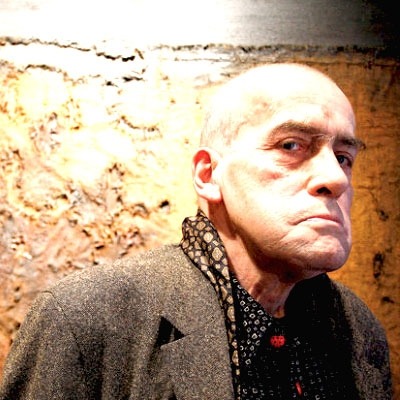
ANDRZEJ URBANOWICZ was born in 1938 in Vilnius. Studies at the Academy of Fine Arts in Krakow in 1956-58, in 1958-1962 at the branch of the Academy of Fine Arts in Krakow - in Katowice. He deals with painting, drawing and graphics. He carried out happenings and paratheatrical activities. In the years 1972-1991 he lived in the USA, where in 1979 he was a scholarship holder of the Kościuszko Foundation in New York. Essayist, art critic and organizer of exhibitions and symposia on the art of Hans Bellmer in Katowice (1995, 2002). Together with Henryk Wańek, co-founder of the BELLMER CREATIVE ASSOCIATION. He died on August 22, 2011 in Szklarska Poręba.
14 notes
·
View notes
Text
🎨 Piotr Topolski - Polish painter (b.1960). He studied at the Academy of Fine Arts in Krakow. The artist creativity relies on the traditional painting style of the old masters. 🖼 Women's portraits - https://piotrtopolski.com/
🎵 Music: Think About It - written by Bryan Teoh - https://freepd.com/
25 notes
·
View notes
Text



DICK PICS FROM ART HISTORY
Polish painter Henryk Siemiradzki was rich and famous. He originally studied science, but abandoned that career to take up painting at the Imperial Academy of Arts in Saint Petersburg, where he won a gold medal in 1870. He is most famous for his monumental academic art, including scenes of antiquity and of the New Testament. There is little written about his personal life other than that he spent much of his life in Rome and he had an estate in Poland where he spent his summers. His remains are in the Polish National Pantheon in Krakow. This nude, painted while the artist was at the Imperial Academy of Arts, was owned by a dentist in Warsaw, where it was shown in a 1939 exhibition by the Society for the Encouragement of Fine Arts in Warsaw. More recently, it was sold to a Polish collector at auction in 2012 for $59,000 US.
In the Painter's Atelier by Henryk Siemiradzki (1843-1902)
39.7"x31.6"; oil on canvas; 1865. Private collection.
Artists have been sliding dick pics into their paintings long before the Internet. Brayden Shayne traveled to museums across the globe to bring you this selection of dick pics from art history. Dick Pics from Art History are available at the Brayden Shayne Shop.
MORE: https://braydenshayne.com/fire/product-category/magnets-buttons/
#queer#queermen#gaymen#gayman#gayguy#gaylife#lgbt#lgbtq#pride#gayboy#queerart#gayart#queerartist#queerthought#instagay#queerportraiture#queermodernism#vintagegay#gaylove#leather#beard#daddy#gaydesigner#queerstudies#queerstagram#queeraf#gayberlin#gaytshirt
4 notes
·
View notes
Photo

Józef Mehoffer 1869-1946 “Portrait of Iza Axentowicz” 1907 Oil on canvas Photo is taken by: @robertpuffjr Izabela Axentowicz, neé Gielgud (1875-1957), was the wife of Teodor Axentowicz, a painter, founding member of the Sztuka Association of Polish Artists and professor at the Krakow Academy of Fine Arts. Mehoffer often painted likenesses of exquisitely dressed ladies against a background of richly patterned tapestries. In this case, the decorative setting is provided by a killm rug designed by the artist himself, which was part of the décor of the Sztuka Association room at a 1905 exhibition in Munich. The painting's elegance is underscored by the refined array of reds and whites. (This writeup is taken from the description at the museum.) National Museum in Warsaw, Poland 🇵🇱 #historyofart #arthistory #greatworksofart #artmuseum #art #artist #masterpiece #painting #museumvisit #artlover #artists #artblogger #jozef #mehoffer #jozefmehoffer (at Muzeum Narodowe w Warszawie) https://www.instagram.com/p/Clu-6aaOB2M/?igshid=NGJjMDIxMWI=
#historyofart#arthistory#greatworksofart#artmuseum#art#artist#masterpiece#painting#museumvisit#artlover#artists#artblogger#jozef#mehoffer#jozefmehoffer
4 notes
·
View notes
Text

"I could not do this without you" 2024,
222cm x 292cm, textile collage (curtain, recycled painting, dyed tablecloth, brocade), woven ribbon, metal grommets

I created this work in the early summer of 2024, for the exhibition "DEAL" which happened at Maxikunst by Künstlergruppe Der Kreis and Krakauer Haus Nuremberg.
The exhibition took place in the rooms of an empty bank building and was a collaboration between students and artist from Nuremberg and the class of Michał Zawada of the academy of fine arts in Krakow.
In the exhibition the piece was still unfinished and was missing the ribbon and the tears cut from recycled paintings.
In the photos the piece is installed in the curtain rail of the pavilion of Klasse Ziese at the academy of fine arts in Nuremberg. The building was designed by Sepp Ruf and features these very big windows looking out into the forest.
On this day, the sun was shining very prettily through the windows and subsequently also the work. The sun highlighted the different weights of the fabrics that I combined, and created another layer of organic structure, which became part of the work.
1 note
·
View note
Text

Karolina Jabłońska, Drinking water, 2023
oil on canvas, 60 × 50 cm | 23.5 × 19.5 in
@art.by.women_women.in.arts @abwwia
1991 born in Niedomice
2010-2015 studies at the Painting Department at the Academy of Fine Arts in Krakow
2014-2015 scholarship at Vysoká škola uměleckoprůmyslová, Praha
2018 artist in residence, Spinnerei Leipzig
Co-founder of artist-run-space Potencja Gallery and "Łałok" magazine.
Lives and works in Krakow.
Karolina Jabłońska’s painting combines the artistic licence of art brut and a neo-expressionist aura with the confessional power of modernists and feminists. Source & more: en.rastergallery com/tag/karolina-jablonska/#artysta-info
#karolinajablonska #art #artbywomen #PalianShow #polishwomenartists #sztukakobiet #sztuka #malarka #malarstwo #contemporaryart #contemporaryfemaleartist
6 notes
·
View notes
Text

Piotr Topolski was born in 1960 in Kielce. He studied at the Krakow Academy of Fine Arts. He specializes in oil painting✅ https://t.me/erogalery
18 notes
·
View notes
Text
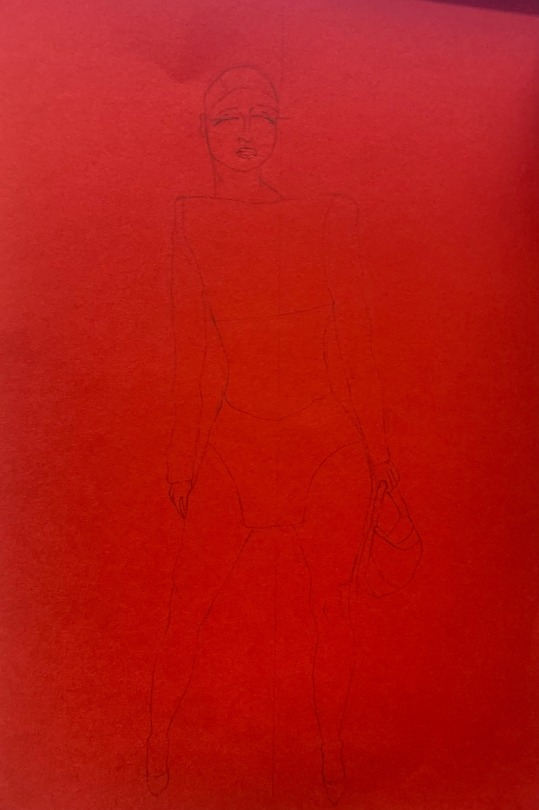
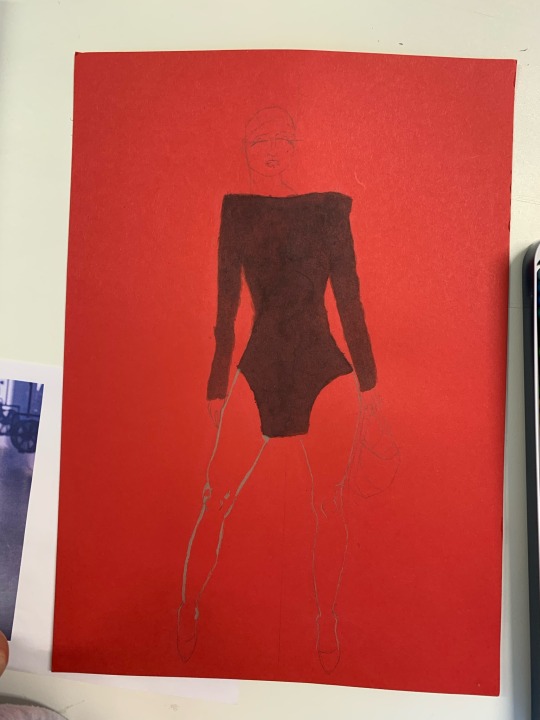


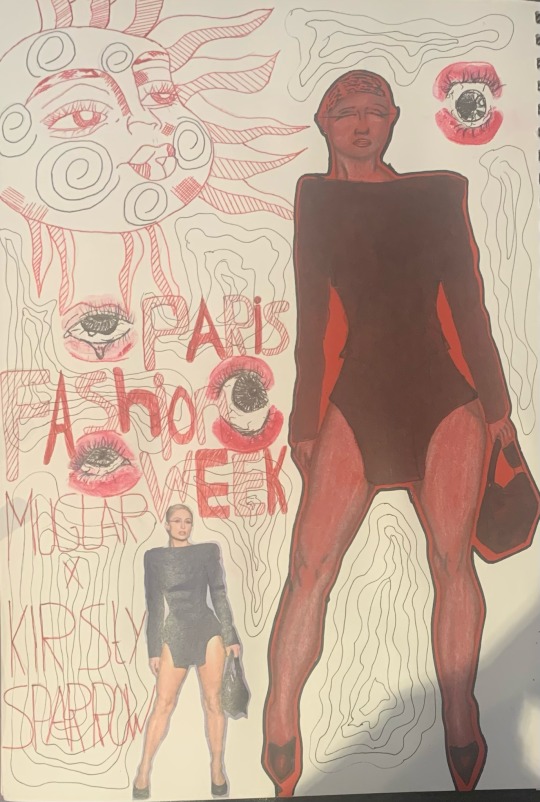
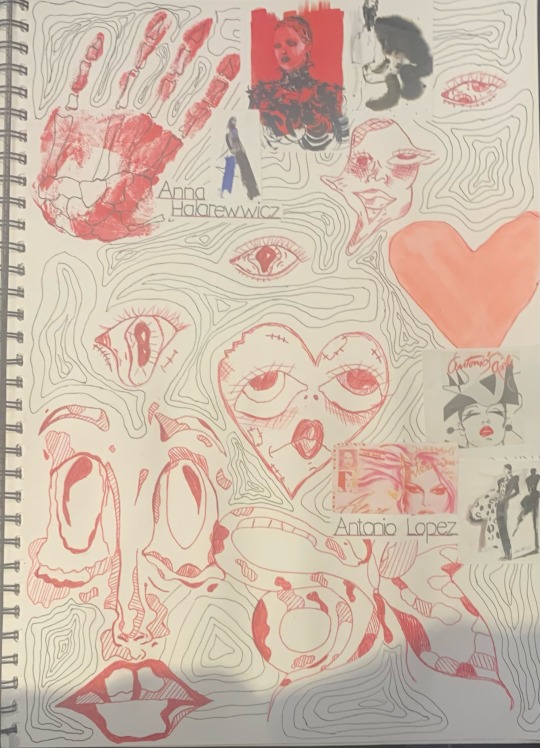
Here, presented above is my second catwalk look from Paris. For my I interpretation on Paris Fashion Week SS24, I explored Paris Hilton wearing Muglar in the style of Casey Cadwallader. I chose this design from Casey Cadwallader as I really enjoy the corset-waist jacket, I like how there is three separate parts which adds layers to the garment. Cadwallader blends his reverence for women's power with a theatrical homage to ocean creatures. Exploring features of extreme artisanal creation inspired by key haute couture collections of the late 1990s, this collection represents a poetic reconciliation of past, present, and future.
One of the artists I chose to work with was Antonio Lopez. He was an illustrator who started out in the mid-60s, he was know as the fashion illustrator who revolutionised the industry. He became a commercial artist and was fashion illustrator for Vogue, Harper's Bazaar, Elle, Interview and The New York Times, active from the early 1960's through to his death. The whooshes of his lines, movement of his drawings and the confident, sexy poses of the models he depicted gave illustration a reboot. It went from an old-fashioned curiosity to a Technicolor world that everyone wanted to occupy. And as a result I wanted to capture the confident, sexy facial pose into my own work inspired by him.
The other artist I chose to work with was Anna Halarewwicz. Anna Halarewicz is an illustrator and artist from Poland. She graduated from one of Poland's top universities – the Academy of Fine Arts in Wroclaw. Anna has taught at the School of Form in Poznan and at the Academy of Fine Arts in Krakow. Fashion, art and their impact on humans are the main subject of her work. Anna's work channels femininity, both strong, sensual, poetic and dark. She enjoys working with a range of mediums including acrylic and watercolor but her main medium continues to be ink. Her works have been published regularly in fashion journals such as TwójStyl, Exklusive, Bluszcz, Wprost, Newsweek, Viva! Moda, Take Me, Elle, Barrel. Anna Halarewicz received the second prize during the biennial of graphics students of the School of Fine Arts of Krakow. Anna's illustrations were commissioned by Poland's top fashion and lifestyle magazines: Harper’s Bazaar, Elle, Newsweek, Glamour, Cosmopolitan and by OOB Magazine from Paris, France. I therefore incorporated her main styles of using ink into my illustrations.
Therefore, as a result of how the artist chose to work, I began by adding ink to each different layer of the corset dress, I tried to add the ink in a splashy way to capture Anna Halarewicz ways of working. I then drew the face in the style of Antonio Lopez to capture the sexy-pose of his models I then went onto use white and light grey pastels to include the extremely light skin tone Antonio Lopez like to work with. I used the darker grey to add depth, definition and shadows to the image. I deliver this turned out very nicely.
For the background I decided to draw edgy and unusual faces as I got this impression from not only the runway itself but the music that was playing whilst Paris walked the runway.
0 notes
Photo
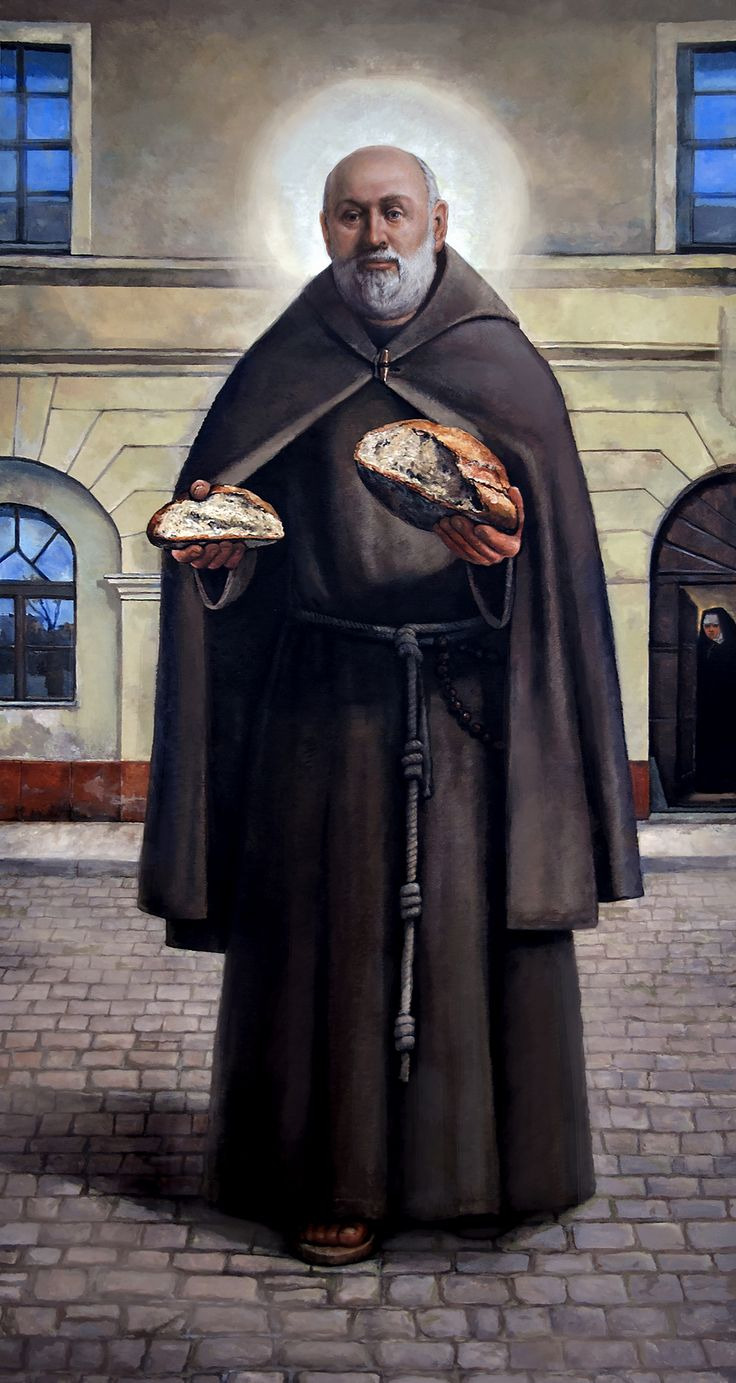
THE DESCRIPTION OF SAINT ALBERT CHMIELOWSKI
The Patron of Soldiers, Volunteers, Travelers and the Diocese of Sosnowiec
Feast Day: June 17
August 20, 1845 - December 25, 1916
"True cultural connection is the Holy Grail for brands if they want to create an enduring emotional relationship with people."
As a young revolutionary and artist in Poland, Adam Chmielowski was not a young man whom people thought would someday be a saint.
Albert (Christened Adam) was born in Krakow (Igołomia, Małopolskie, Congress Poland) in 1845, the eldest of four children in a wealthy aristocratic family. He and his siblings lost their parents while very young and were raised by a paternal aunt. Adam's initial education was in agriculture to prepare him for managing the family estate. They lived at a time when the country of Poland did not 'exist.' In the late 18th century, the once-mighty Polish nation was partitioned between Austria, Prussia (Germany) and Russia. The Polish people refused to accept this and were constantly rebelling against their oppressors. When Adam was 18, he took part in one of these uprisings. During a particularly brutal battle, a Russian grenade killed Adam's horse under him and severely damaged his leg. He was captured by soldiers allied with the Russians who took him to a woodman’s shed where his leg was amputated without anesthesia. He was then taken to a hospital for a medical assessment. While the soldiers debated on what to do with their injured prisoner, Polish allies aided Adam to escape from the hospital hidden in a coffin. The young Pole accepted his suffering stoically and learned to function with a wooden limb, offering all to God for the cause of Poland’s independence and rebirth.
Because of his actions against Russia, it became expedient for Adam to leave Poland. He initially immigrated to Belgium where he took up the study of engineering. During this period, it was discovered that he had artistic talent. He went on to France and then Germany, where he studied painting and proved his exceptional talent at the prestigious Academy of Fine Arts in Munich. When he was nearing 30, Adam returned to his homeland and became one of Poland’s most celebrated artists. His circle of friends included the best-known Polish artists, directors, actors, and writers of this time.
In spite of his growing success, Adam's life of celebrity left him feeling empty; at one point he was even hospitalized for depression. Throughout this period, Adam remained a devout Catholic and many of his works reflected this, including his masterpiece, the unfinished Ecce Homo, depicting the mocked Jesus. His need to be closer to God grew and sent him in search of God’s plan for him. He entered a Jesuit novitiate but realized quickly that God did not want him there. He became increasingly fascinated with the life and teachings of St. Francis of Assisi, and became a secular Franciscan, taking the name of Brother Albert. He even spent a brief period in a Carmelite monastery where he grew in spirituality but became reaffirmed that his place was as a Franciscan.
19th century Krakow's socioeconomic problems were many, in particular, social inequality. More than a fifth of the population was unemployed and homeless. Although many religious orders were hard at work trying to help the situation in their city, their efforts were insufficient for the ever-increasing numbers of poor. Concerned with the plight of the impoverished Poles, Adam began working in the city shelter and even opened his apartment to the homeless, eventually realizing that it was to this work that God was calling him.
In 1887 he began his 'religious life' as Brother Albert of the Third Order of St. Francis. Wearing a simple gray habit, he lived in the city homeless shelter with those he served. He soon realized that to bring the poor lasting change, the lice-infested Krakow shelter needed reform. He negotiated an agreement with the city of Krakow to become the institution's caretaker. To finance this reform, he auctioned off all his paintings. He began by banning alcohol in the shelter and requiring the residents to do work, teaching them practical skills and lecturing on the Gospels. Within a year, Brother Albert had founded his own branch of the Franciscans, the Servants of the Poor, who are sometimes called the Albertine Brothers. A few years later he founded the 'Albertine Sisters,' a women's congregation with the same intent of helping Poland's poor. They set up homes for the poor, sick, mentally ill and elderly in over 20 Polish cities. Today, the work St. Albert began continues. Sharing the life of the poor, he turned each filthy refuge into a warm shelter for Christ and encouraged the brothers and sisters of his Congregation to see Jesus in each human being.
Brother Albert worked and lived with the poor until his death in 1916 during World War I. At the time of that conflict his 'Albertines' were seen in the trenches aiding the sick and injured among the troops. St. Albert died on December 25, 1916, in a shelter he himself had opened in Krakow. His beloved Poland regained its independence and became a 'country' again shortly after his death, in 1918.
St. Albert was an inspiration to St. John Paul II. When Karol Wojtyła began his studies at Jagiellonian University, he was a young, promising actor, playwright, and poet. Like the young Adam Chmielowski, he found his calling to serve God and the Church was stronger than his love for the arts. John Paul II later said, that he found great spiritual support for his own vocation in the life of the Polish saint whom he saw as an example - leaving behind a world of the arts to make a radical choice for the priesthood.
In 1949, the young Father Karol Wojtyła repaid his spiritual debt by writing a play about St. Albert titled, 'Our God's Brother.' A Kracovian urban legend had it that Brother Albert met Lenin (who lived in Krakow after being expelled from Russia) and debated him on how to best alleviate poverty. The play features imagined dialogues between the saint and the communist revolutionary. (In 1997 the play was made into a film starring the late Scott Wilson.) As Cardinal Wojtyla, the future pope oversaw the apostolic process for Albert Chmielowski's cause for beatification. After his election to the papacy, John Paul II beatified St. Albert in 1983 and canonized him in 1989.
In today's self-centered age, when professional success is seen as the greatest good, St. Albert Chmielowski - who gave up the life of a celebrity painter to serve Christ by helping the poor - challenging us to ask if we focus too much on worldly goals and ignore life's true meaning.
Source: Guard of Honor of the Sacred Heart of Jesus
1 note
·
View note